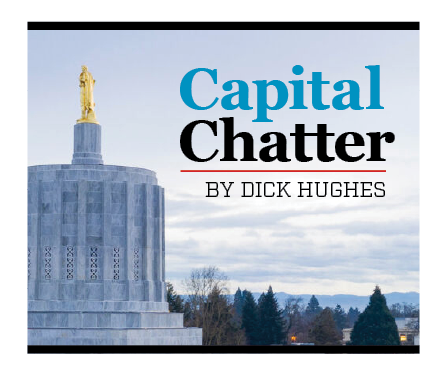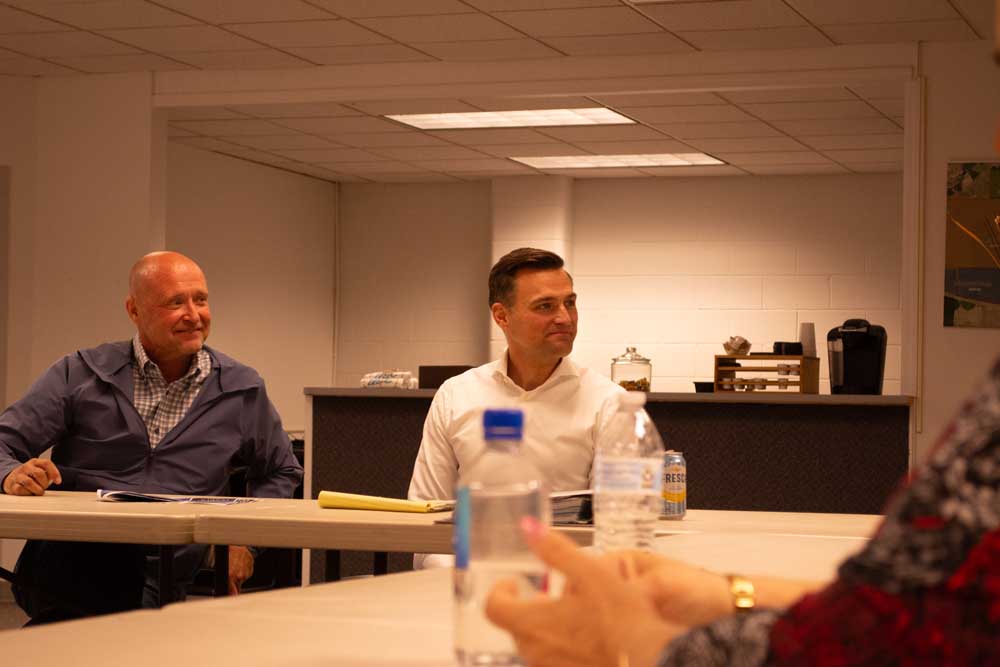Capital Chatter: Be wary of Oregon stereotypes
Published 5:00 pm Thursday, October 13, 2022

- capital chatter logo
A New York Times reporter contended that he was not hearing much introspection from Oregon Democrats. As a presidential candidate, Joe Biden had won the state with 60% of the vote in 2020 (actually 56.4%) yet Democrats’ gubernatorial candidate now found herself in a dead heat with the Republican contender.
“Do Democrats hold any responsibility for the situation you’re in at the moment where you’re at risk of losing the governor’s race, the governor’s seat, for the first time since the ‘80s?” Reid Epstein asked this week during a Zoom press conference with Democrat Tina Kotek’s campaign.
Trending
Fair question.
Trying to dissuade voters from going with unaffiliated candidate Betsy Johnson, Kotek’s campaign held the 29-minute event to portray the race as down to two people: Kotek and Republican Christine Drazan. The news and data site FiveThirtyEight has run a series of simulations to predict the election outcome. Drazan won 50 out of 100 times; Kotek won 49 times.
Reporter Epstein pointed to voters’ discomfort with the homelessness situation in Portland, as well as the fact that Democrats have controlled state government for 40 years. An Do, of Planned Parenthood PAC of Oregon, and former Secretary of State Bill Bradbury responded by citing Johnson’s well-funded and aggressive campaign. (Kotek was not in the press conference, which I found interesting.)
No one acknowledged Democrats’ responsibility, that perhaps the political pendulum might finally have swung too far. That could be true on both ends of the spectrum, which is why political figures such as former Democratic Gov. John Kitzhaber and former Republican gubernatorial candidate Knute Buehler have departed their respective parties and registered as nonaffiliated voters.
Doug Moore, of the Oregon League of Conservation Voters, did say that Oregon often is mischaracterized as a very blue state when it’s actually purplish.
Ah, be wary of the political stereotypes placed on any region. Oregon’s status on the political spectrum varies according to the political contest, Republicans’ ability to field high-quality candidates and the strength of their campaign structure and funding.
Trending
Democrats have won 31 of the 33 statewide partisan elections since 2002. Secretary of State Dennis Richardson and U.S. Sen. Gordon Smith were the lone Republican victors during those 20 years.
That certainly sounds like a resoundingly blue state, but look behind the numbers, as John Horvick of DHM Research did earlier this year.
The average Democratic margin of victory was attorney general, 24 percentage points; U.S. Senate, 14 points; U.S. president, 12 points; state treasurer, 10 points; and secretary of state, 7 points. But the Democratic candidates for governor won by an average of only 5 percentage points.
Polls during September and October show Drazan leading Kotek but often within the margin of error. In the recent Emerson College poll of very likely voters, Drazan was supported by 36% of participants; Kotek, 34%; and Johnson, 19%.
With three strong candidates, it remains probable that a minority of voters will elect Oregon’s next governor. Any of the three could yet win. The outcome rests on whether nonaffiliated voters – who outnumber either major party – turn out, and how effective Kotek and Drazan are in capturing and holding their party bases. In the past, nonaffiliated voters have participated at a rate 25% to 30% lower than Democrats and Republicans, according to political scientist Jim Moore.
In the campaign’s final weeks, Kotek must articulate a new Democratic vision: how she will be different from Gov. Kate Brown while holding many of the same values. Drazan must provide a vision beyond saying Oregon is an awful fix because of the Democrats. Johnson must show she truly is a centrist candidate and has the capacity to bring Oregonians together.
So far, the trio has excelled primarily at tearing one another apart.
However, Kotek’s ace remains the political power of the public employee unions. Along with providing gobs of money, as Phil Knight has done for Johnson and now for Drazan, the unions also can turn out loads of volunteers to staff phone banks and canvass door-to-door. Republicans in the past have not shown that manpower.





